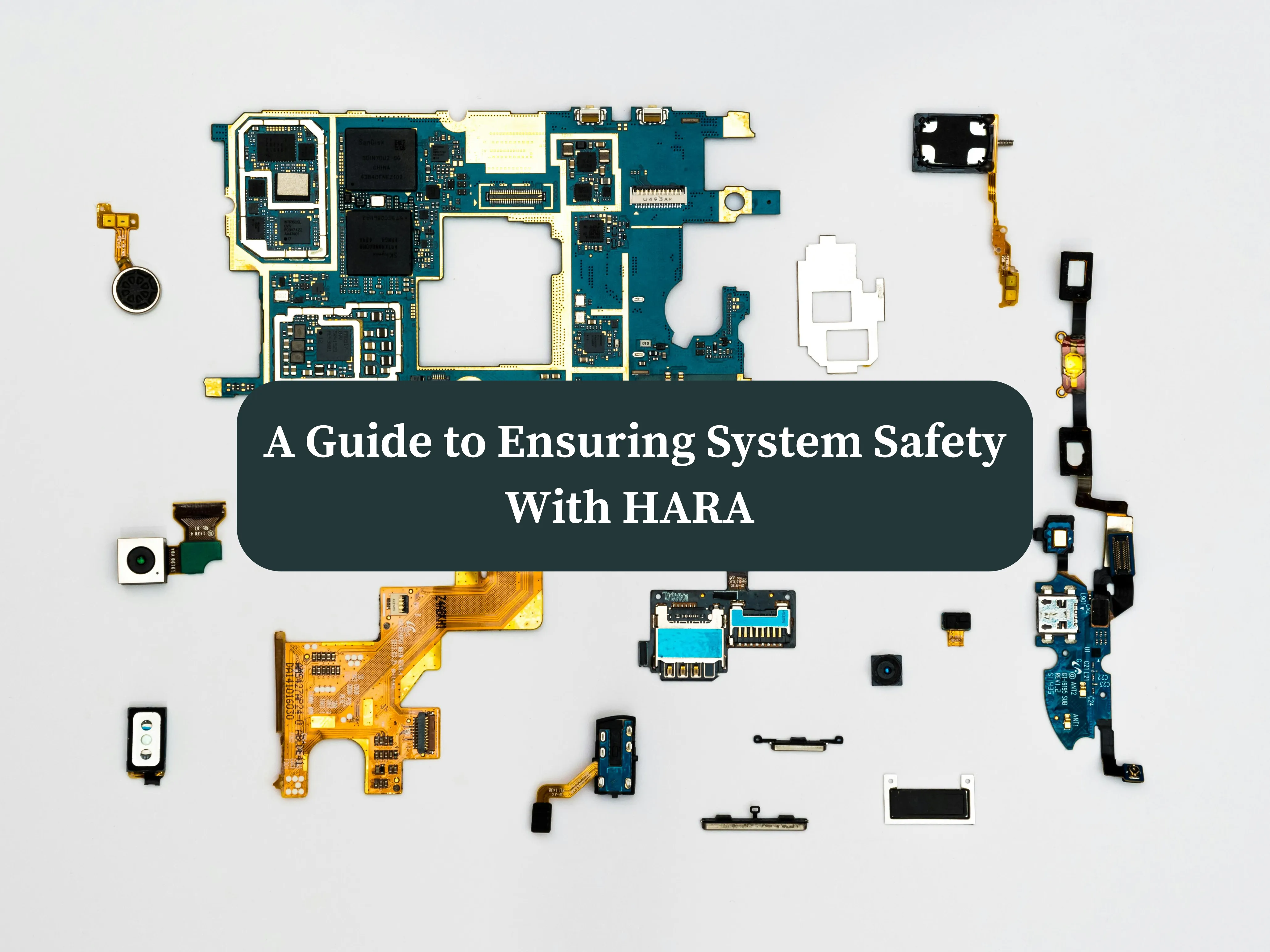In high-stakes environments, where the safety and reliability of systems are paramount, conducting a Hazard Analysis and Risk Assessment (HARA) is essential. This structured process aims to systematically identify potential hazards, assess their severity and likelihood, and establish measures to control or eliminate them. By prioritizing critical risks, HARA plays a significant role in creating safer systems and work environments. This article breaks down the HARA process, emphasizing each step and its importance in designing secure, reliable systems.
Why Conduct a HARA?
The primary objective of a Hazard Analysis and Risk Assessment is to identify risks early and implement targeted safety measures, ultimately preventing potential accidents or failures. HARA is typically conducted in the concept phase of the design V-model —a project management and development model often used in engineering sectors such as automotive, aerospace, and defense. A less intensive form of this process, called a Risk Assessment (RA), is sometimes employed in machinery and robotics, focusing more on user tasks and interactions with the system while achieving similar safety goals.
Steps to Conducting a HARA
Each phase of HARA is essential to ensure that hazards are thoroughly identified, classified, and mitigated. Here’s how to conduct an effective HARA:
1. Identify Operational Situations (Tasks)
The first step involves identifying all operational situations and operating modes of the system or item under analysis. Understanding the various ways the system will be used—and by whom—is critical for accurately identifying potential hazards. This may include normal operations, maintenance, emergency situations, and other unique operational scenarios.
2. Identify Hazards
Once all operational situations are identified, the next step is to systematically identify potential hazards associated with the system. These could be inherent to the system itself or arise from interactions with the environment or users. During this stage, it’s vital to think broadly and consider various types of hazards, such as mechanical, electrical, thermal, or operational, depending on the nature of the system.
3. Classify Hazardous Events
Hazardous events are then classified based on three criteria: severity, exposure, and controllability. Each event’s classification helps determine the appropriate Performance Level (PL) or Safety Integrity Level (SIL) required to ensure safe operation. For example:
- Severity assesses the potential impact of the hazard on people, property, or the environment.
- Exposure refers to how frequently people are exposed to the hazardous event.
- Controllability considers the likelihood that the hazard can be controlled or avoided by operators.
By applying these criteria, each hazard can be assigned an appropriate PL/SIL, representing the level of safety measures required to reduce risks to an acceptable level.
4. Apply PL/SIL Design Requirements
Once hazardous events are classified, PL/SIL design requirements are assigned. This entails setting specific safety standards for each hazard based on its assigned risk level. For machinery, this level is commonly identified as Performance Level (PL), while other systems often refer to Safety Integrity Level (SIL). Each designation informs the level of rigor needed in safety design and development. (Click here to learn more about safety standards in different industries.)
5. Set Safety Goals
The next step is to establish safety goals for each identified hazardous event. These goals are designed to mitigate or eliminate risks associated with each event, ensuring that all possible measures are in place to prevent accidents. Safety goals can involve hardware, software, procedural changes, or even training requirements to help reduce risk.
6. Verify and Confirm
Lastly, it’s essential to verify and confirm the effectiveness of the HARA. This step ensures that all identified hazards have been appropriately addressed and that the risk-reduction measures meet the desired safety goals. Regular review and validation of the HARA are recommended, especially if system requirements change or new information about potential hazards becomes available.
Conclusion
Conducting a HARA is an invaluable process in ensuring the safety and reliability of complex systems. By identifying, classifying, and mitigating hazards early in the design phase, organizations can significantly reduce the likelihood of dangerous accidents, ultimately protecting both personnel and assets. Whether applied in the automotive sector, machinery, or other industries, HARA provides a structured and effective approach to risk management that supports a safer operational environment. Embracing HARA as part of a system’s lifecycle is a critical step towards creating safe and resilient designs.
